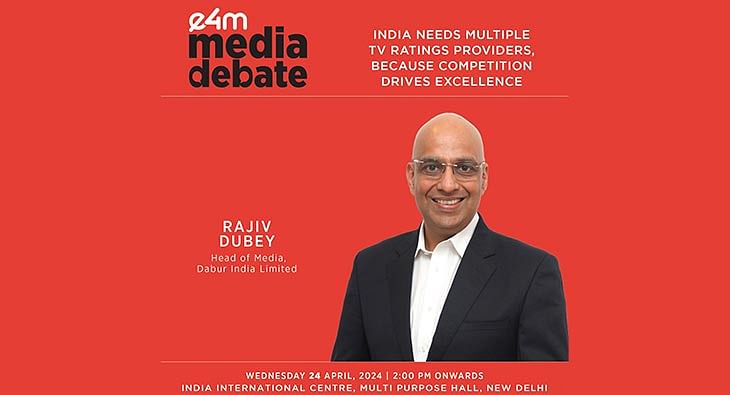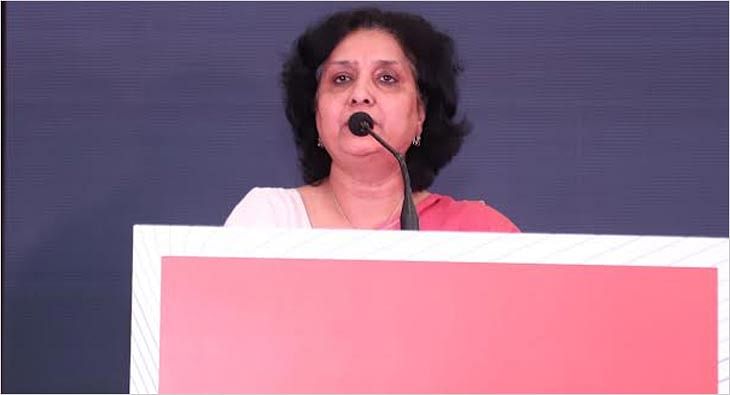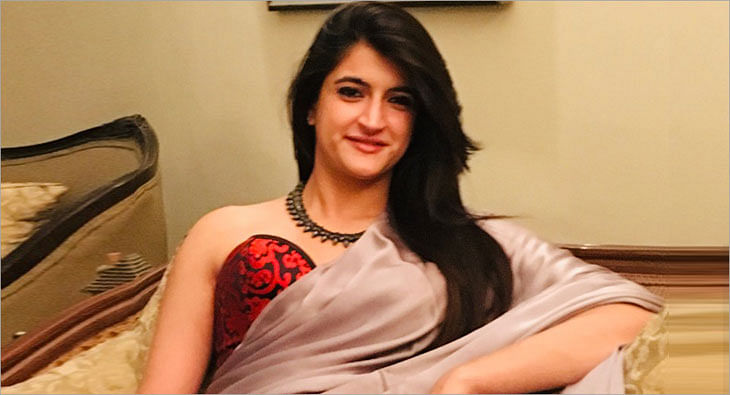Auto, FMCG brands top spenders on news channels during Bihar election result coverage
Election results are one of the most anticipated events, and hence draw one the highest viewership on television. We took a look at some of the brands that advertised on the news channels during the counting day

The Grand Alliance consisting of JD(U), RJD and Congress swept the Bihar Assembly Election, winning two-thirds of the seats. The NDA alliance led by BJP along with allies LJP, HAM and RLSP, on the other hand, suffered a crushing defeat with only 58 seats of the 243 seats. News channels relayed the election result to viewers with extensive coverage and analysis of the numbers as they came in on Sunday. The channels came alive with programming that included graphics, various analytic tools, panel discussions, heated debates, interviews, etc.
Election results are one of the most anticipated events, and hence draw one the highest viewership on television. As a result this all attracts the attention of marketers and brands looking to gain mileage from the high viewership. Bihar being one of the largest States in terms of the number size and the number of seats was one of the most anticipated election state. This saw extensive campaigning and ad spends by political parties such as the BJP, JDU and others during build up to the polls. We took a look at some of the brands that advertised on the news channels during the counting day and the trends.
Brands on English news channels
Among the English News channels, Times NOW, for its election day programming, had Muthoot Finance as the presenting sponsor, co-presented sponsor UltraTech, powered by sponsor Lifespan and associate sponsors Raymond, Jaquar bathrooms, Radico and Flying Machine. Apart from that they had several other brands too advertising during their election result counting coverage which included Jewelsouk.com, Tata Motors, National Insurance, Dabur Red Paste, Dabur Chavanprash, Magic Moments, JK Tyres, Nikon, .OOO Infibeam, Xrbia, Hotstar, Dominos, Racold, Ravin Power Bank, etc.
CNN IBN had Hero MotoCorp as the presenting sponsor, Park Avenue suits as the powered by sponsor. Some of the associate sponsors on the channel included Lloyd led TVs, Toyota Liva, Total engine oil, MTS, Idea, Skoda, Agarwal Group, DIU, Hero Sprint cycles and even the Indian Army advertised among others.
NDTV 24x7 had brands Lloyd led TVs and Cadbury Celebrations as the presenting sponsors, while Quickheal and Hero MotoCorp were co-powered by sponsors. Brands such OLX, Raymond, Nissan, Skoda, EON led lighting, JK Lakshmi Pro Cement, Dabur Chavanprash and Volkswagen were some of the other brands that advertised on the channel.
India Today had Jaquar bathrooms as the presenting sponsor, Muthoot Finance as the powered by sponsor, JK Tyre as the co-sponsor. The associate sponsors included Nerolac paints, Dabur Red Paste, Sony Bravia, Hero MotoCorp, Oxigen Wallet, EaseMyTrip.com, Dabur Chavanprash, LIC HLF, C&S Electric, etc.
NewsX had on board brands such as Nerolac, Ambuja Cements, Bharati AXA, Canon, HPL led lights, Bajaj led lights, Ford and CP Plus as their top advertisers. The other brands on the channel during the elections result programming included Nivea Men Deo, Sony Bravia, CarTrade.com, Dominos, Toyota Liva, Park Avenue suits, etc.
Brand on Hindi news channels
On the Hindi news channels many of the top advertisers were the same as on the English news channels. However, it was also noticed that many of the advertisers were also local brands and even pan masala brands. Aaj Tak had Syska led lights as the presenting sponsor, Nerolac and Patanjali as the powered by sponsors. Other brand sponsors included JK Tyres, UltraTech Cement, Amul Bodywarmer, Roop Mantra herbal face wash, Tasty Treat Ketchup, Wheel washing powder, Hero MotoCorp, Jaquar, Galaxy Basmati Rice and Kamla Pasand pan masala among others.
ABP News had brands such as Badsha masala, Honda CD Shine bike, Patanjali, Kamla Pasand pan masala, Dulux paints, Peter England, Black Stone agarbati, Lafarge Dura Guard Cement, Senco, Jaquar, Raymond, Bandhan Bank, Oxigen wallet, Nivea Men Face Wash and Syska led lights among others.
India TV had Jupiter Group as the presenting sponsor, Hyundai as Driven by sponsor, Rupa innerwear and HP as co-powered sponsor. The associate brands included Fevi Kwik, Hero MotoCorp, HCL, Rajdani Besan, Patanjali and Kamla Pasand.
NDTV India had powered by sponsors such as HP, Hero MotoCorp, Dulux paints, Agarwal Packers and Kamla Pasand. There were several other brands that also advertised on the channel.
IBN7 had Berger paints and Fogg as the presenting sponsors and Patanjali as co-sponsor. The other brands on board included MDH Masala, Park Avenue suits, Ajnara real estate, Dr. Bakson’s Homeopathy, Tide Plus, Lloyd led TV’s, EON led lighting, JK Lakshmi Cements, Hero MotoCorp, Datsun, Acro paints, DHFL, Bajaj Auto, etc.
The brands on Zee News included Honda, Berger paints, R-pure, JK Tyres, Dalmia Cements, Rupa Thermal, Quickheal, TVS, EaseMyTrip.com, Kamla Pasand, Hero MotoCorp, Intex smart phones, Royal Stag among others.
Brand category trends
In the English news channels the automobile brands–two and four wheelers advertised the most. Apart from this, FMCG brands spent heavily. Some of the other categories that advertised heavily included the led lighting brands, cement brand and consumer durables. There were a few retail brands and the surprising was very little advertising from ecommerce brands which have been advertising heavily advertising on TV.
Among the Hindi news channels saw the maximum advertising coming from FMCG category and pan masala brands. Apart from this Cement was a big brand category that advertised. HeroMotoCorp in the auto category advertised on all the channels in this genre. The paint category and led lighting category too advertised a lot during the election result period. There were several local brands advertising on the news channels too. A reason for this is the festive period.
Read more news about Television Media, Digital Media, Advertising India, Marketing News, PR and Corporate Communication News
For more updates, be socially connected with us onInstagram, LinkedIn, Twitter, Facebook Youtube, Whatsapp & Google News
The current ratings system lacks trust: Rabindra Narayan, PTC Network
During the recently held e4m media debate, Rabindra Narayan, MD and President, PTC Network, spoke for the need for multiple TV rating providers
The current system of ratings by BARC lacks trust and credibility, said Rabindra Narayan, MD and President, PTC Network, at the e4m debate on Wednesday while asserting the need for multiple rating agencies in the broadcast ecosystem.
The e4m media debate on ‘India needs multiple TV rating providers because competition drives excellence’, held in New Delhi, was chaired by Anurag Batra, Founder of e4m and Editor-in-Chief of Businessworld Media Group.
During the debate, Narayan, who was speaking for the motion with other panellists, questioned the Broadcast Audience Research Council (BARC) ratings, particularly for news channels saying that politicians spending money to advertise on news channels and not GECs, is proof enough that the genre is doing much better than the ratings given by BARC.
“The fact that we are having this discussion, implies that the current system lacks trust. It lacks credibility. BARC analyses only linear TV that is beamed and received through satellite and cable. TV viewing today is not just linear TV, it also has several forms like connected TV and Fast TV coming on the same screen but BARC is not measuring it,” he said.
Narayan further said that it was time to innovate and look at content rating rather than just television rating points.
“As per BARC, news genre reach is 6-7% in the entire country, if that is true then why are politicians eager to spend on advertising on news channels? Why not on GECs? Why all the money spent by advertisers to reach maximum consumers, based on this Bible (BARC) which is junk? Why are we fighting for TV rating points and not content rating points when the technology and the system is changing?
“The current system of ratings (by BARC) is flawed, biased as it is controlled by a handful of people. Broadcaster lobby is controlled by four business houses so it will always remain in their favour. The data shows it,” he argued.
In his concluding remarks, Narayan said that BARC needs to improve and for that it does not even need to invest in more meters than it already has because cable operators and DTH are now digitised.
“They don’t even need to invest more. They don’t even need more meters than the ones installed already because every cable operator is now digitised and has two-way addressable communication available,” he said.
e4m Media Debate 2024: Call for multiple ratings agencies to break monopoly
Industry players discussed the authority of the current ratings system and whether having multiple agencies will cause increased complexities, discrepancies and expenses
Indian TV news media and advertisers today rely solely on the data released by the Broadcast Audience Research Council (BARC) India to strategise media plans and budgets.
Hence, many suggest having multiple rating systems which will allow for a more nuanced understanding of viewership patterns across different demographics.
Rabindra Narayan, MD and President, PTC Network; Mona Jain, Chief Revenue Officer, Zee Media, and Karthik Sharma, Group CEO, Omnicom Media Group believe a multi-ratings system will drive excellence amidst competition.
On the other hand, multiple ratings systems may also present challenges such as increased complexity, potential discrepancies in ratings, and higher costs for broadcasters as well as advertisers.
The current system of ratings is “flawed” and “biased, as it is controlled by a handful of people,” was the view of the industry veterans who advocated the need for multiple rating agencies instead of just one, which is currently the BARC, saying “monopoly makes people complacent”
During the debate, things got intense when some of the panellists, who were speaking for the motion, questioned BARC ratings, particularly for news channels saying that politicians spending money to advertise on news channels and not GECs, is proof enough that the genre is doing much better than the ratings given by BARC.
To present a viewpoint against the motion, Chintamani Rao, Strategic Marketing and Media Consultant, Rajiv Dubey, Head of Media, Dabur India, and Varun Kohli, Director and CEO, Bharat Express News Network joined the debate at e4m’s Media Debate in New Delhi. Dr. Annurag Batra, Chairman and Editor-in-Chief, BW Businessworld Media Group and Founder, e4m Group, chaired the debate.
Jain opened the discussion and said, “There is a dependency of an advertiser to take up a particular media plan via the agency. On the other hand, the broadcaster is absolutely at the mercy of the measurement system which decides where you rank. The issue is nobody looks at what the reality on ground is. Hence, I have started telling agencies and advertisers to also look at my digital platform’s ranking but the rating in BARC still holds significant value for them.”
She further suggested we should have an authenticated, validated, acknowledged currency which is recognised and valued by advertisers and agencies as well.
Presenting an opposing stand, Rao explained, “There many doubts about BARC and its functioning but I continue to maintain that audience measurement is no business of the government.”
At the end of the day, it is not about the number of vendors but how they are managed. Two poorly managed are not better than one, he added. The key issue is that BARC is dominated by one of its constituents and that is the one which is being measured.
“If advertiser’s money fuels the entire media ecosystem, why did they accept a structure with Indian Broadcasting & Digital Foundation (IBDF) at 60 percent?” questioned Rao.
Sharma, who joined virtually, expressed that if we forget the industry for a while, why do we need the NSE and BSE? Why do we need CIBIL and Experian? The short answer is innovation and competition. If there would be no competition, we would have one brand in every category we operate in.
“Even in a market like the USA, which has the largest AdEx market, there are two systems. Even the UK, Australia, Malaysia, Philippines and so many more countries have two audience measurement systems. In a largely populated country like India two systems will help in better sampling and segmentation,” he added.
Dubey took the stage right after and spoke about how one, two or multiple rating systems don’t matter to an advertiser. At the end of the day, it should help the brand sell. His objective is to reach out to the consumers in the cheapest possible manner.
“The idea of BARC was to have a robust system which could measure everyone well. Have we been able to do that? Probably yes or probably no,” he said.
With changing times, the audience needs have changed and NCCS was a system that measured the class of people based on the ownership of consumer durables. But now, the newly proposed ISEC fulfils those gaps.
Consumers have also started consuming content on different platforms, more towards digital and OTT. Dubey believes, “We haven’t been able to measure that audience correctly yet. Hence, the Indian TV industry needs one system and that system needs to be strengthened in such a way that it measures TV and digital audience equally.”
On having multiple audience measurement systems, the Dabur spokesperson said, “To solve the problem, you should not create another problem, but fix the problem instead.”
Narayan of PTC, who stood for the motion, expressed, “The fact that we are standing here and debating the issue, implies the current system lacks trust and credibility. We are also setting the premise that by TV ratings, we only mean linear TV ratings because that is what BARC does.”
He further shared that BARC does measurement via image mapping and hence, when any channel puts its watermark on any platform, it should become measurable for BARC since they already have the technology for it.
“Then why don't they? Because they need more focus on analysis, not more investment. The trouble is the ecosystem is not allowing the expansion of those ratings,” he added.
Today, BARC says 9 out of 100 people watch PTC, which is impossible and advertisers bargain for the ad rates accordingly. The channel today continues to invest in good shows but advertiser interest is low due to BARC’s data. If there is any truth to this, why wouldn’t players like PTC fight for multiple ratings systems?
“When Chandrayaan was launched, everyone in the world and India was watching it but if you see the BARC data, that particular week the ratings of the news genre went down. Is that even possible? News genre is much higher than what BARC is projecting,” Jain added.
Even on a day like the launch of Chandrayan, there was no spike on BARC data. Jain and Narayan both believe the current system is flawed and biased because it is controlled by a handful of people.
“The fact that we are having this discussion, implies that the current system lacks trust. It lacks credibility. BARC analyses only linear tv that is beamed and received through satellite and cable. TV viewing today is not just linear tv, it also has several forms like connected TV and Fast TV coming on the same screen but BARC is not measuring it,” Narayan said.
Narayan further said that it was time to innovate and look at content rating rather than just television rating points.
“As per BARC, news genre reach is 6-7% in the entire country, if that is true then why are politicians eager to spend on advertising on news channels? Why not on GECs? Why all the money spent by advertisers to reach maximum consumers, based on this Bible (BARC) which is junk? Why are we fighting for TV rating points and not content rating points when the technology and the system is changing?
“The current system of ratings (by BARC) is flawed, biased as it is controlled by a handful of people. Broadcaster lobby is controlled by four business houses so it will always remain in their favour. The data shows it,” he argued.
Kohli of Bharat Express, said, “BARC came into existence because publishers wanted a different rating system and then a mechanism was conceived. Now, questioning that system just because ratings aren’t in the right proportion or it doesn’t map digital audiences and to further ask for a separate body, I dont think is the right way.”
The industry needs to come together and exercise jurisdiction with BARC to tell them what more is needed and where they can get better, he suggested as a solution.
Rao also suggested it is better to have an aggregator rather than multiple players. In that case, the aggregator can also become the provider of data. BARC can always collect multiple data from various sources and present it.
The mapping of the audience correctly will also solve the problem in a way, which will be done with ISEC majorly. Having a unified measurement is also another solution, said Dubey.
According to Sharma, “Having more than one player will definitely fuel innovation and have a little competition, which is good. Different rating systems could also focus on different target segments, cohorts and more.”
“We need to focus on screens and not linear tv or digital. It is a screen-based world and people are just consuming content which is meaningful for them. So different types of consumptions require different types of measurements. My argument is innovation is critical as it is high time.
“Consumer is looking at the screen through mobile or TV sets. How are we measuring it? Some competition is healthy. It is important to have a mindset of how one system can help the other. The current system is not wrong but the newer system can enhance what we have,” he said.
Narayan concluded, “Television viewing and consumption has changed. Either BARC grows up to the changing times or others should come in and fill the gap. The market forces will decide who will remain and who will go, whose data is authentic and whose is not. There is no need for a debate here.”












 Share
Share